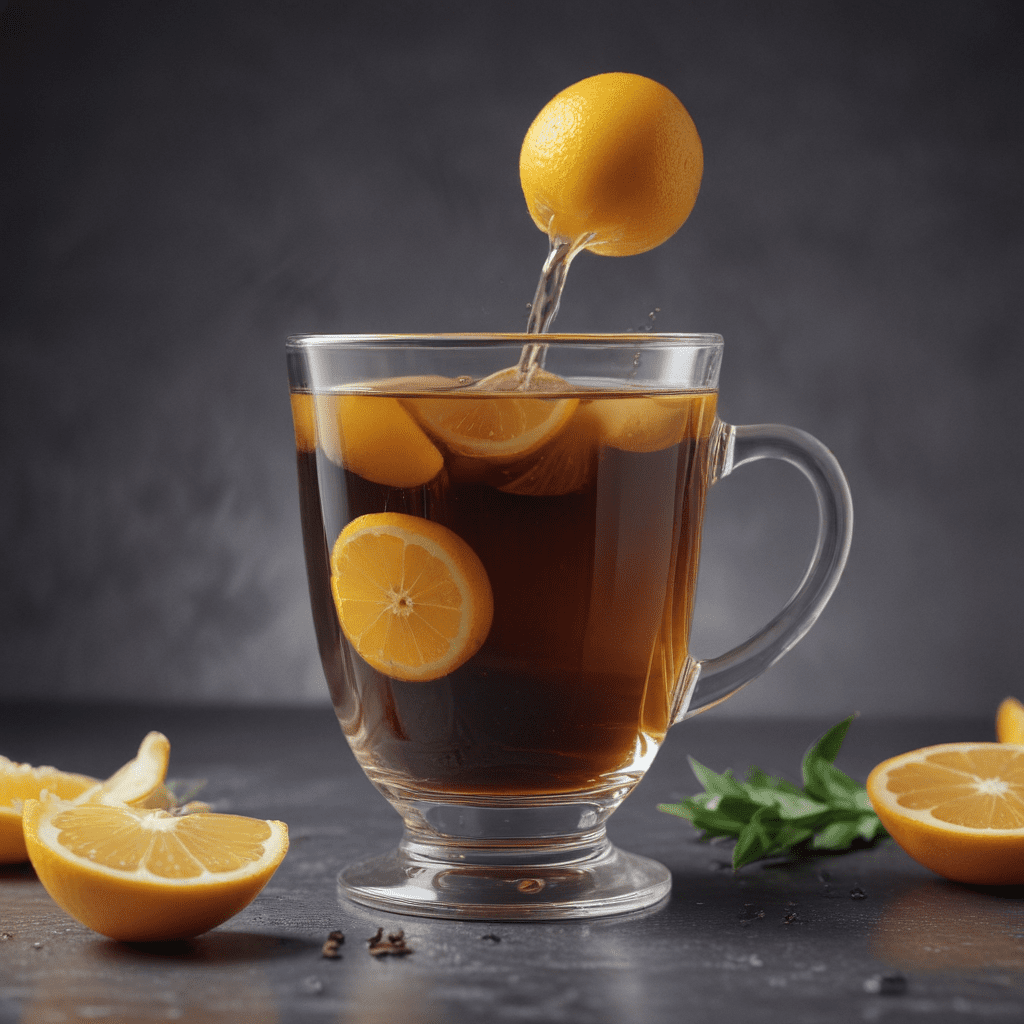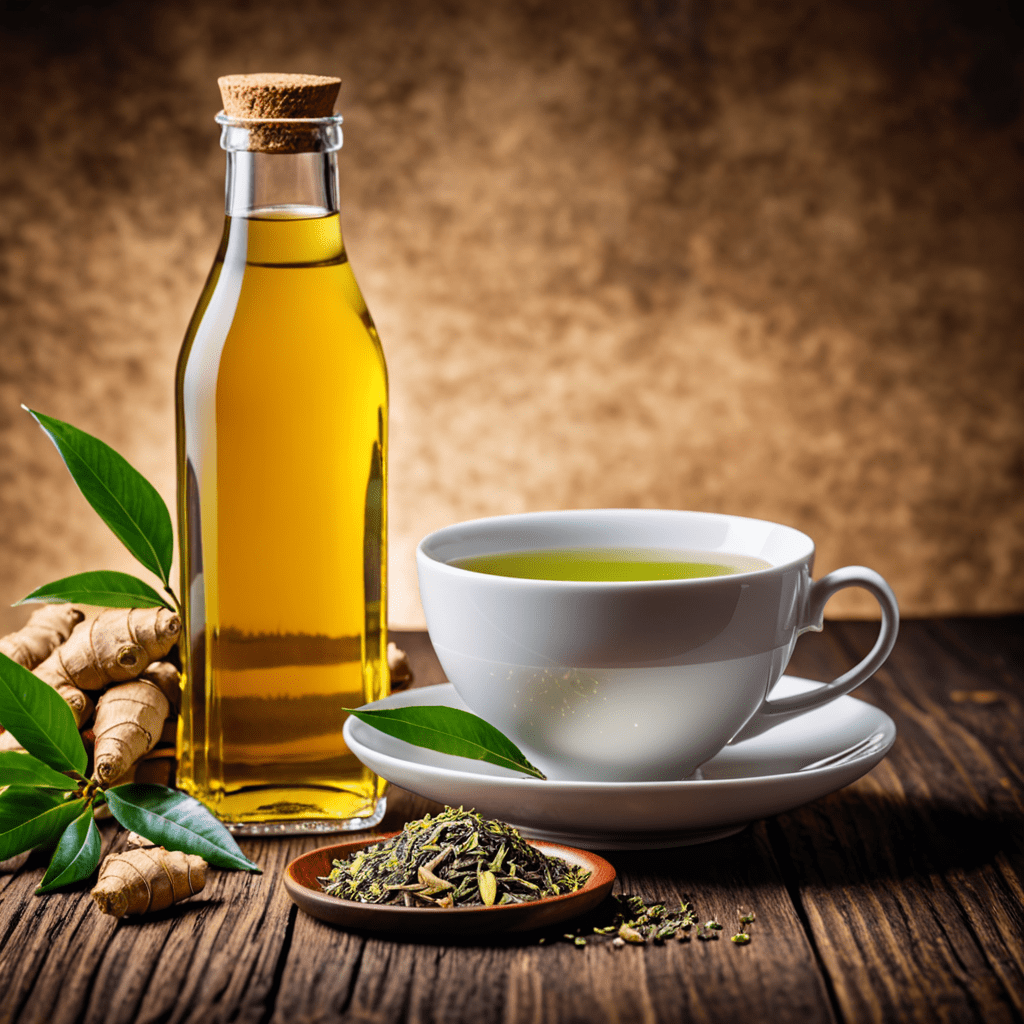
Origins and History of Earl Grey Tea
Earl Grey tea, renowned for its distinctive citrusy aroma, traces its roots back to the 19th century. The genesis of this beloved tea is shrouded in folklore, with multiple tales vying for its origin. One popular legend attributes the creation of Earl Grey tea to Charles Grey, the second Earl Grey, who was allegedly gifted a batch of tea infused with bergamot oil while serving as a diplomat in China. Entranced by its exquisite flavor, Earl Grey introduced this novel brew to England, where it quickly gained popularity among the aristocracy and beyond.
The Blend: Black Tea and Bergamot Oil
Earl Grey tea is a harmonious blend of black tea and bergamot oil. Black tea, with its robust character and full-bodied flavor, serves as the foundation for this tea. The addition of bergamot oil, extracted from the rind of the bergamot orange, imparts Earl Grey tea with its signature zesty, citrusy notes. The delicate balance between the malty richness of black tea and the refreshing fragrance of bergamot creates a symphony of flavors that captivates tea enthusiasts worldwide.
Bergamot Oil: The Star Ingredient
Bergamot oil, the heart and soul of Earl Grey tea, is derived from the bergamot orange, a unique citrus fruit native to southern Italy. This essential oil boasts a complex aroma that is both sweet and tart, with hints of orange, lemon, and grapefruit. The judicious addition of bergamot oil to black tea transforms it into Earl Grey tea, elevating it from an ordinary brew to an extraordinary experience.
Varieties of Earl Grey Tea
While the classic Earl Grey tea remains the most prevalent, various interpretations of this beloved beverage have emerged over time. Some notable variations include:
Lady Grey: A gentler, floral twist on Earl Grey, Lady Grey incorporates the addition of lavender and cornflower petals, adding a delicate sweetness and calming effect to the blend.
Russian Earl Grey: A robust and assertive take on Earl Grey, Russian Earl Grey is characterized by the inclusion of additional lemon zest and cardamom, resulting in a bolder, citrusy flavor profile.
Brewing the Perfect Cup of Earl Grey
To fully appreciate the exquisite flavors of Earl Grey tea, proper brewing technique is essential. Follow these steps to craft the perfect cup:
Use Fresh, Cold Water: Begin with fresh, cold water, ideally filtered or spring water. Avoid using boiling water, as it can scorch the tea leaves and produce a bitter flavor.
Preheat the Teapot: Warm the teapot before adding the tea leaves. This helps to prevent the tea from cooling down too quickly and allows the flavors to develop fully.
Measure the Tea Leaves: Use approximately 1 teaspoon of loose-leaf Earl Grey tea per 8 ounces of water. Adjust the amount to suit your desired strength.
Steep for 3-5 Minutes: Steep the tea leaves for 3-5 minutes, depending on your preferred strength. Avoid over-steeping, as this can result in bitterness.
Strain and Enjoy: Strain the tea into a cup or teapot and savor the aromatic delights of Earl Grey tea.
Health Benefits of Earl Grey Tea
Apart from its tantalizing flavor, Earl Grey tea offers an array of health benefits. Black tea, the base of Earl Grey tea, contains antioxidants that help protect cells from damage. Studies have linked black tea consumption to a reduced risk of heart disease, stroke, and certain types of cancer. Additionally, bergamot oil possesses antibacterial and antiviral properties, contributing to Earl Grey tea's potential immune-boosting effects.
Citrusy Flavor Profile
The citrusy flavor of Earl Grey tea is its defining characteristic. Bergamot oil imparts a zesty, invigorating aroma and taste to the brew. The subtle hints of orange, lemon, and grapefruit add a refreshing and uplifting dimension to the tea's flavor profile. Earl Grey tea strikes a harmonious balance between the malty richness of black tea and the vibrant citrus notes of bergamot, creating a symphony of flavors that tantalizes the taste buds.
Pairing Earl Grey Tea with Food
Earl Grey tea pairs exceptionally well with a variety of foods. Its citrusy flavor complements sweet and savory dishes alike. Consider enjoying a cup of Earl Grey tea with pastries, scones, or fruit tarts for a delightful afternoon treat. For a savory pairing, Earl Grey tea pairs well with grilled fish, roasted chicken, or a light salad. The tea's citrus notes cut through the richness of the food, creating a balanced and flavorful experience.
Cultural Significance of Earl Grey Tea
Earl Grey tea has become deeply ingrained in British culture, gaining widespread popularity and recognition. It is a staple beverage served in tea rooms, homes, and social gatherings across the country. Earl Grey tea has also found its way into popular culture, appearing in literature, film, and television shows. Its iconic status as a quintessentially British drink serves as a testament to its enduring appeal and cultural significance.
The Legacy of Earl Grey Tea
The legacy of Earl Grey tea continues to inspire tea enthusiasts worldwide. Its unique blend of black tea and bergamot oil has stood the test of time, remaining a beloved and timeless beverage. Whether enjoyed as an afternoon pick-me-up or a relaxing evening treat, Earl Grey tea offers a captivating taste experience that transcends generations. Its enduring popularity and cultural significance ensure that Earl Grey tea will continue to be cherished by tea lovers for years to come.
FAQ
Q: What is the difference between Earl Grey tea and Lady Grey tea?
A: Lady Grey tea is a variation of Earl Grey tea that includes lavender and cornflower petals, giving it a sweeter and more floral flavor profile.
Q: Can Earl Grey tea be consumed during pregnancy?
A: While Earl Grey tea does not contain caffeine, it is best to consult with a healthcare professional before consuming it during pregnancy.
Q: What is the ideal temperature for brewing Earl Grey tea?
A: For the best flavor, brew Earl Grey tea with water at a temperature of 195-205°F (90-96°C).
Q: Can I add milk or sugar to Earl Grey tea?
A: While some prefer to enjoy Earl Grey tea without any additions, adding milk or sugar is a matter of personal preference.


